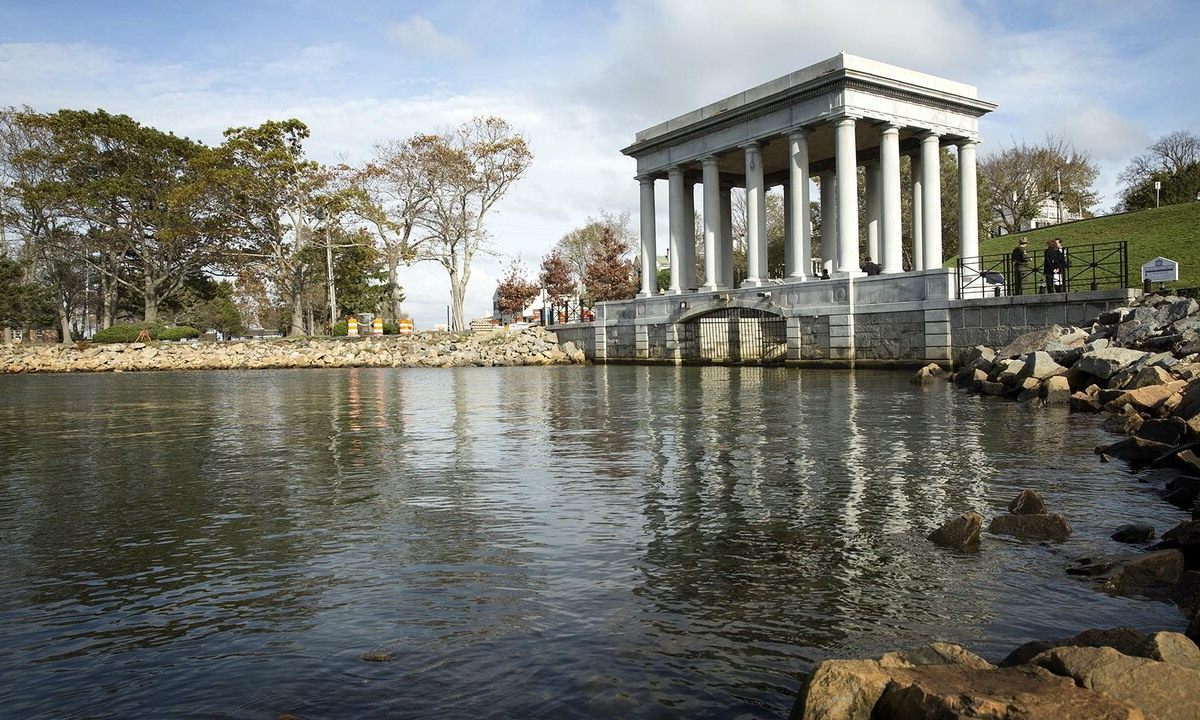Pilgrims’ Historic Landing At Plymouth Rock

Have you ever wondered where the Pilgrims first set foot in America? Plymouth Rock in Massachusetts marks that historic spot. This iconic landmark symbolizes the beginning of a new chapter for the Pilgrims who arrived on the Mayflower in 1620. Visiting Plymouth Rock offers a glimpse into early American history and the struggles faced by the settlers. The town of Plymouth itself is rich with historical sites, museums, and reenactments that bring the past to life. Whether you're a history buff or just curious about America's beginnings, Plymouth Rock provides a fascinating look into the country's early days.
The Historic Significance of Plymouth Rock
Plymouth Rock holds a special place in American history. This iconic landmark marks the spot where the Pilgrims, seeking religious freedom, first set foot in the New World in 1620. Let's explore some key locations tied to this historic event.
Plymouth Rock
The most famous site, Plymouth Rock, symbolizes the Pilgrims' arrival. Though the rock itself may seem modest, its historical importance is immense. Visitors can see it at Pilgrim Memorial State Park, where it rests under a protective canopy.
Mayflower II
A replica of the original Mayflower ship, Mayflower II offers a glimpse into the Pilgrims' challenging journey across the Atlantic. Docked at Plymouth Harbor, this ship allows visitors to step back in time and experience life aboard a 17th-century vessel.
Plimoth Patuxet Museums
Plimoth Patuxet Museums provide an immersive experience of Pilgrim and Native American life. The museum features a recreated 17th-century English village and a Wampanoag homesite, showcasing the daily lives, struggles, and interactions of these two cultures.
Pilgrim Hall Museum
Pilgrim Hall Museum, the oldest continuously operating public museum in the United States, houses an extensive collection of Pilgrim artifacts. Visitors can view items like William Bradford's Bible and Myles Standish's sword, gaining deeper insight into the Pilgrims' lives.
Burial Hill
Burial Hill, one of Plymouth's oldest cemeteries, is the final resting place for many of the original Pilgrims. Walking through this historic site, visitors can find gravestones dating back to the 17th century, including those of Governor William Bradford and other notable figures.
National Monument to the Forefathers
Standing tall in Plymouth, the National Monument to the Forefathers honors the Pilgrims' ideals and contributions. This impressive granite statue, one of the largest solid granite monuments in the world, features allegorical figures representing virtues like faith, education, and liberty.
Pilgrim Memorial State Park
Pilgrim Memorial State Park, home to Plymouth Rock, offers scenic views of Plymouth Harbor. The park provides a peaceful setting for reflection and learning about the Pilgrims' journey and their impact on American history.
Brewster Gardens
Brewster Gardens, located along Town Brook, commemorates the Pilgrims' early settlement. The gardens feature beautiful walking paths, statues, and plaques detailing the Pilgrims' experiences and interactions with the Native Americans.
Jenney Grist Mill
Jenney Grist Mill, a working reproduction of the Pilgrims' original mill, demonstrates the importance of milling in the early colony. Visitors can tour the mill, learn about its history, and even purchase freshly ground cornmeal.
Leyden Street
Leyden Street, the oldest continuously inhabited street in the United States, was the heart of the Pilgrims' settlement. Walking down this historic street, visitors can imagine the bustling life of the early colony and see homes dating back to the 17th century.
Pilgrim John Howland Society
The Pilgrim John Howland Society preserves the memory of John Howland, a Mayflower passenger who played a significant role in the colony's development. The society's headquarters, located in Plymouth, offers resources for those interested in Pilgrim genealogy and history.
Sparrow House
Sparrow House, one of the oldest surviving wooden houses in America, provides a glimpse into 17th-century domestic life. Now an art gallery and museum, it showcases both historical artifacts and contemporary art, blending past and present.
Plymouth Waterfront
Plymouth Waterfront, a bustling area filled with shops, restaurants, and historical sites, offers a vibrant atmosphere for visitors. Strolling along the waterfront, one can enjoy views of Plymouth Harbor and reflect on the Pilgrims' arrival.
First Parish Church
First Parish Church, founded by the Pilgrims in 1620, stands as a testament to their religious convictions. The current building, constructed in 1899, continues to serve as a place of worship and community gathering, preserving the Pilgrims' legacy.
Final Thoughts on Plymouth Rock
Plymouth Rock stands as a powerful symbol of American history. Visiting this iconic site, you can almost feel the weight of the Pilgrims' journey and their quest for freedom. The surrounding area offers more than just a glimpse into the past. With charming streets, historic homes, and the scenic waterfront, there's plenty to explore. Don't miss the Mayflower II, a replica of the ship that brought the Pilgrims to America. It's a tangible connection to the past. Whether you're a history buff or just looking for a unique destination, Plymouth Rock delivers. The blend of history, culture, and natural beauty makes it a must-see. So pack your bags, hit the road, and experience the birthplace of a nation. Plymouth Rock awaits, ready to share its stories and secrets with you.

